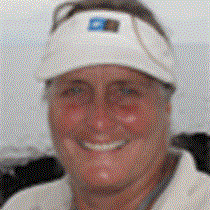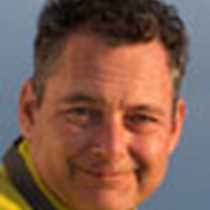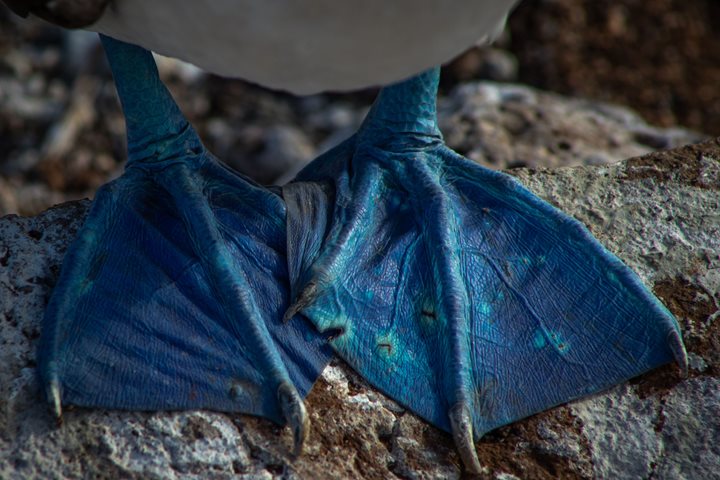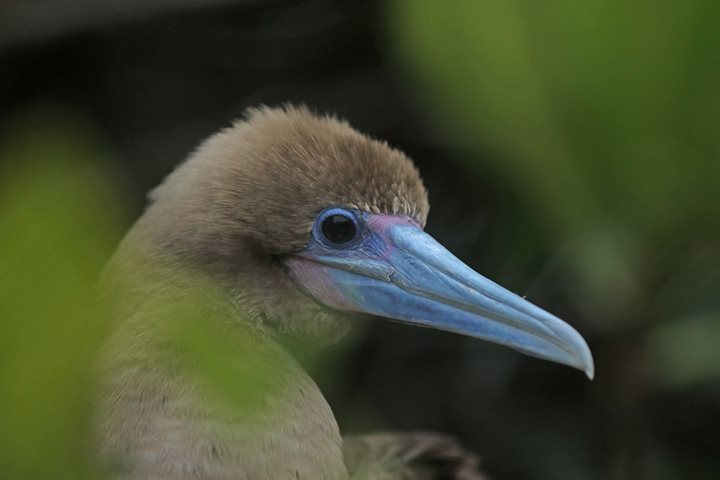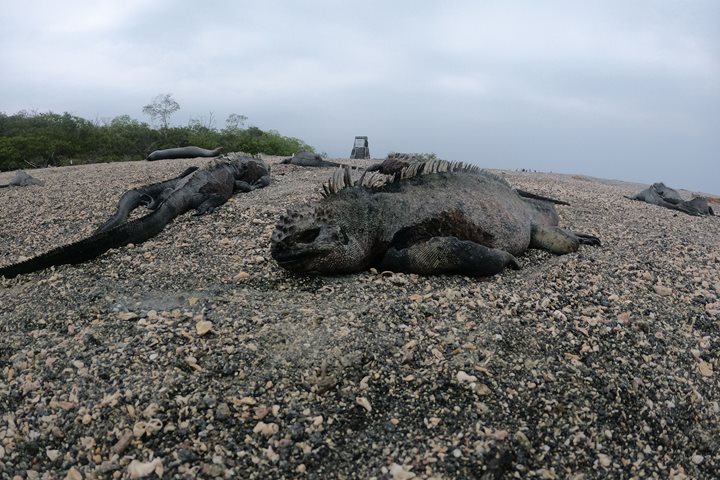We entered the eroded and flooded caldera of the northern island of Genovesa this morning just before dawn. The crew quickly lowered our fleet of bright yellow kayaks and one Zodiac, so that naturalist Patricio and Zodiac driver Edwin could accompany the eager group of “early riser kayakers” who had already had their first cup of coffee before 0630 and were raring to go! They slipped into their boats and then paddled along below the cliffs and admired the myriad seabirds of several species that were perched and soaring overhead.
After a hearty breakfast we boarded the Zodiacs, rode a short way towards shore, and disembarked on a white coral sand beach full of coral pebbles. This morning’s walk was short but extremely enjoyable! Some of our guests even accused us of saving the best walk of all for last! Genovesa is home to hundreds of thousands of birds, and on our short walk we saw great frigate birds, Nazca boobies and red-footed boobies, yellow crowned night herons, several species of finches, and mocking birds. Adult red footed boobies were nesting in the mangrove shrubs and dozens of dark juvenile red-footed boobies (without their red colored feet yet) sat on the lava boulders and salt bushes and watched us with curiosity. We took hundreds of photos!
One highlight this morning was finding a newborn sea lion pup that was only hours old. Two of the rare, endemic lava gulls fighting over the placenta was the first clue that a sea lion had been born not long ago in the area. We found the mother and pup at the edge of the beach, shaded below a small rocky cliff. They alternately rested and interacted, getting to know one another and the pup eventually found the teats and nursed successfully. Later the mother and pup moved down to the water’s edge.
Two groups of snorkelers went out in the late morning and had an interesting outing. They swam and snorkeled along at the base of the cliffs. The visibility was not quite as good as on previous days, but there were plenty of colorful fish to admire. Back on the ship we had lunch and siesta before our final afternoon walk.
We made a dry landing on the lava rocks and climbed the rough Prince Phillip’s Steps. The trail led out and back through a palo santo forest. Along the trail we found more nesting frigates and both Nazca and red-footed boobies – and to our delight we also found several short eared owls! These raptors feed in the late afternoon on shear waters and storm petrels. In the absence of competition with other birds of prey – there are no other species of owls or hawks found on Genovesa – they have abandoned their normal nocturnal feeding habits and can be found hunting during the day.
As we motored back across the wide flooded caldera to the National Geographic Islander, the sun was setting and bathed us in golden light. This had been yet another spectacular and thrilling day in Las Islas Encantadas. Everyone had a smile upon their face!



